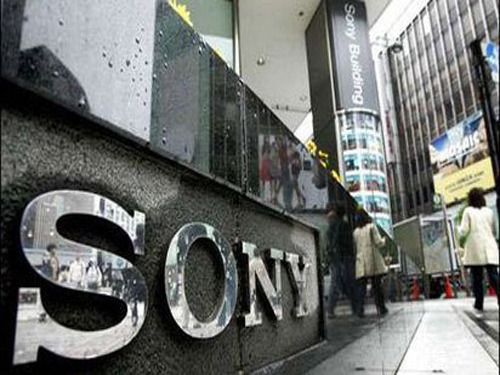
Sony, who has fallen into a long-term loss-making quagmire, is racking his brain to seek self-help. After divesting part of its business, laying off staff worldwide, and selling the Tokyo Tower, Sony has also resorted to a delisting strategy. Due to sparse trading volume and desire to save costs, Sony decided yesterday to withdraw from the London Stock Exchange, which has been listed for 44 years, despite the corresponding transaction cost of only $98,000 per year.
Distressed performance of the stock market
A Sony spokesperson stated that "since the trading volume is scarce, there is no economic rationality to continue to choose to list on the London Stock Exchange," and it is expected that it will be officially delisted around August 29.
It is understood that Sony's stock was listed on the London Stock Exchange in 1970 and has so far been 44 years. Currently, Sony's stock turnover on the exchange is only 1% of its turnover on the Tokyo Stock Exchange, but Sony spends more than 10 million yen (about US$ 98,000) per year to maintain its listing. In this case, Sony opted to withdraw from London's capital market in order to reduce costs and save money.
Sony said that after delisting from the London Stock Exchange, Sony continued trading in stocks in Tokyo and the New York Stock Exchange. However, Sony's stock continued to dive and the market value has dropped from the highest value of US$125 billion in 2000 to around US$18 billion.
At the same time as the delisting model was opened, Sony released its first fiscal quarter financial report for the fiscal year ended June 30. Although net profit and revenue all achieved year-on-year growth, it still could not reverse Sony's full-year loss situation. . Sony estimates that the net loss for fiscal year 2014 (April 2014 to March 2015) will be around 500 billion yen.
Self-help is too slow
In fact, since Mr. Hirai became the CEO of Sony, he has begun drastic reforms for Sony to save himself. In February of this year, Sony sold its personal computer business to Japan's investment fund JP, splitting its stand-alone TV business, and laid off 5,000 people worldwide, and plans to complete it by the end of the fiscal year.
Subsequently, Sony sold the old headquarters building in Tokyo and the nearby facilities. The one-time gains thus obtained gave Sony an operating profit of 15 billion yen during the quarter.
“Sony Hirai’s lead is trying to restore strength, but the pace of his turn is too slow, and there is not much time left for Sony.†Some observers so screamed. Sony, once the world's leading consumer electronics giant known by Jobs as "the god," has a long product line, but almost all products are facing a crisis. For example, the smart phone business of Sony betting is not only difficult to contend with the high-end market structure dominated by the giants of Apple and Samsung, but also faces the impact of domestic and foreign manufacturers from Huawei and Lenovo in the low-end market.
In the third quarter of the upcoming new mobile phone mix, Sony has reduced its estimated 50 million smartphone sales to 43 million, and predicts that the best results for smart phone sales this fiscal year may only be a balance. It is clear that Sony has a long way to go to reverse this trend.
Brothers
In fact, in the wave of consumer electronics industry revolution in recent years, Sony is not the only major company that has fallen. On the contrary, Kodak, the former film giant, as well as Sharp, Matsushita and Japanese giants Nokia and Motorola, both of which belong to the Japanese era of feature phones. , Blackberry, etc., feng shui turns, and the market reshuffle drama is playing uninterestingly.
These difficult brothers seem to be aware of the difficulties of fighting alone. Just yesterday, Sony, Panasonic, Japan Innovation Network Corporation, Japan showed that the four companies reached a cooperation and will form a joint venture JOLED Inc. (hereinafter referred to as “JOLED Corporationâ€), which is used to integrate the R&D functions of Sony and Panasonic OLED display panels.
OLEDs are recognized as the next-generation display technology in the industry. Chinese and South Korean companies have a strong interest in this, and their layout has continued. Sony and Matsushita have withdrawn for a short time, and the formation of a joint venture company has caused countless conjectures.
Not surprisingly, JOLED will be officially established in January 2015.
Hong Shibin, executive chairman of the China Home Appliances Commercial Association Marketing Committee, believes that Sony's choice to invest in the OLED panel industry under current operating conditions is likely to be due to pressure from the Chinese and South Korean companies on the entire machine market, and it is decided to focus on the core components. In terms of production, it wants to rely on its own technological advantages to reverse the loss situation.
However, Sony and Matsushita's right to speak in the company remains doubtful. According to the joint venture agreement, in JOLED Corporation, Japan Innovation Network Corporation and Japan Display Corporation will hold 75% and 15% of the voting rights respectively, while Sony and Panasonic each have only 5% of the voting rights.
Table Top Stove,Single Burner Gas Cooker,Stainless Steel Portable Stove,Indoor Portable Gas Stoves
xunda science&technology group co.ltd , https://www.gasstove.be
